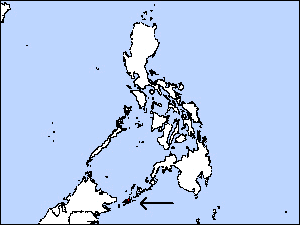
Sulu Bleeding-heart
Gallicolumba menagei
|
Justification The lack of records for this species
for over a century suggests that it must have a tiny population, if it
survives at all. Continuing forest loss indicates that it is almost
certainly declining. Indeed, it is predicted to undergo an extremely rapid
population reduction in the immediate future based on this loss. These
factors together qualify it as Critical. |
|
|
|
Threats In 1994, remaining primary forest on
Tawitawi was being rapidly cleared and the areas of forest left were
highly degraded and recently logged. In 1996, there were plans to replace
even these with oil-palm plantations. Logging of the few remaining tracts,
now confined to rugged, mountainous areas, is likely to be followed by
uncontrolled settlement and conversion to agriculture. Small-scale logging
operations occur on Tandubatu, Dundangan and Baliungan. Hunting and
trapping may have caused a substantial decrease during martial law in the
1970s. |
|
Conservation Military activity and insurgency
continue to present a serious obstacle to general conservation activity in
the Sulus. There are no protected areas in the archipelago. A proposal
exists to provide conservation funding for the Tawitawi/Sulu Coastal Area,
although neither the outcome nor the likely benefits to the species are
known. In 1997, a public awareness campaign focusing on the conservation
of terrestrial biodiversity on Tawitawi was initiated. In the mid-1990s,
the species featured on a bilingual environmental awareness poster in the
in the Philippinesseries. |
|
Targets *Conduct intensive surveys of all
remaining forest tracts on Tawitawi and nearby islands to establish
whether the species is still extant. *Urgently propose any sites found to
support the species for strict protection. *Incorporate protective
measures relevant to this species within conservation funding proposals
for the Tawitawi/Sulu Coastal Area, as and where appropriate. |
Use Your Browser's Back Button to return to the Previous Page